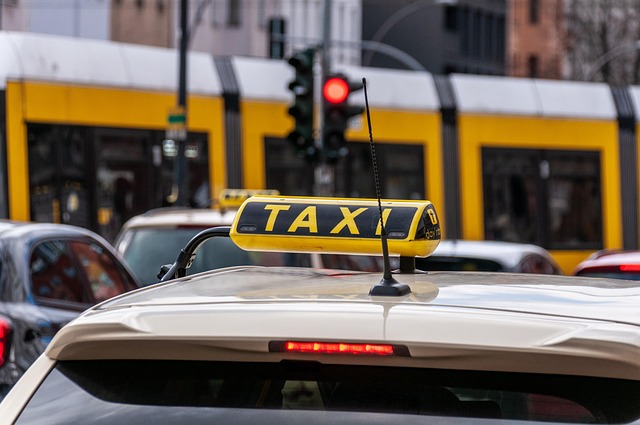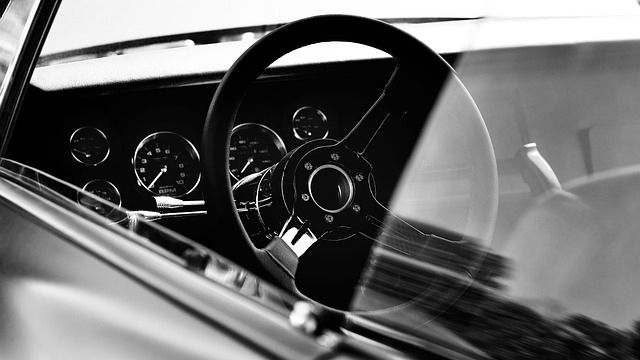Looking to register your car in California? This comprehensive guide walks you through every step, from understanding key requirements to completing the process online or at a DMV office. We’ll highlight the importance of a successful dmv vin verification and ensure you have all the necessary documents ready. Get ready to navigate California’s vehicle registration process smoothly and efficiently!
- Understand the Requirements for Car Registration in California
- Gather Necessary Documents for Vehicle Registration
- Perform DMV VIN Verification Step-by-Step
- Complete the Online Registration Process or Visit a DMV Office
- Pay the Required Fees and Receive Your Registration Documents
Understand the Requirements for Car Registration in California

Before you begin the registration process, it’s crucial to understand the requirements for car registration in California. The state Department of Motor Vehicles (DMV) mandates several key steps, including a thorough vehicle inspection and verification of your vehicle’s unique identifier—the Vehicle Identification Number (VIN). This VIN verification process is essential to ensure that your car meets all safety and emissions standards before it can be legally registered.
In California, this typically involves a thorough check of your vehicle’s history using advanced technology. A mobile VIN verifier, for instance, can perform this inspection conveniently by scanning the VIN and cross-referencing it with state databases to confirm its authenticity and ensure there are no outstanding issues or recalls associated with the vehicle. This digital approach streamlines the registration process, making it faster and more efficient for both you and the DMV.
Gather Necessary Documents for Vehicle Registration

Before registering your car in California, ensure you have all the essential documents ready. This process typically involves several key steps and pieces of information. Firstly, gather your vehicle’s registration certificate from the previous state where it was registered. Additionally, obtain a Vehicle Identification Number (VIN) inspection or verification, which can be done through a mobile vin verifier for added convenience. The California Department of Motor Vehicles (DMV) requires this step to ensure the vehicle’s authenticity and history.
Another crucial document is proof of insurance, demonstrating that you have the appropriate coverage for your vehicle. You’ll also need identification documents such as a driver’s license or state-issued ID card, along with any relevant tax forms or fees specific to California requirements. A valid, current registration from another state can simplify this process, but always confirm with the DMV what additional steps are necessary for successful car registration in California.
Perform DMV VIN Verification Step-by-Step

Performing a DMV VIN (Vehicle Identification Number) verification is a crucial step in the car registration process in California. Here’s a simple, step-by-step guide to help you navigate this process efficiently. Firstly, gather all necessary documents, including your vehicle’s title, registration papers, and proof of insurance. Next, visit the California DMV website to access their online services or schedule an appointment at a nearby DMV office if you prefer in-person assistance.
During the verification process, you’ll be required to enter your VIN using one of the available methods: online through the DMV portal, over the phone, or by visiting a service center offering mobile vin inspection or mobile vin verification services. The DMV will cross-reference this unique 17-digit code with their records to ensure the vehicle’s authenticity and verify its compliance with California’s registration requirements. This step is essential for ensuring your car’s legal status and preventing fraud, making it a seamless and important part of registering your vehicle in the Golden State.
Complete the Online Registration Process or Visit a DMV Office

You have two options for registering your car in California: complete the process online or visit a DMV office in person. Both methods involve gathering essential documents and providing accurate information, but going digital streamlines the experience. Online registration allows you to submit your application, pass the DMV test, and even schedule a vehicle inspection (including DMV VIN verification) from home.
If you opt for the traditional route, a visit to the DMV requires queuing up, filling out forms, and potentially enduring longer wait times. However, this method is necessary if your paperwork isn’t in order or if you need assistance with the online process. Either way, ensuring your vehicle’s vin inspection is complete and accurate will make the registration process smoother.
Pay the Required Fees and Receive Your Registration Documents

After completing your vehicle’s inspection, it’s time to settle the fees for registration. The California Department of Motor Vehicles (DMV) charges a set amount for car registration, which may vary depending on various factors such as the type of vehicle and its age. You’ll also need to pay for a vehicle identification number (VIN) verification, ensuring that your car’s details match the information in the DMV’s system. This step is crucial to avoid any discrepancies and streamline the registration process.
The DMV offers several payment options, including cash, credit cards, or debit cards. Once you’ve paid, you’ll receive your registration documents, which include important details about your vehicle’s ownership and registration status. It’s advisable to keep these documents secure and handy for future references, especially when conducting a mobile VIN verification or during any vin inspection.
Registering a car in California is a straightforward process that requires understanding specific requirements, gathering essential documents, and completing either an online or in-person registration. The key steps include performing a DMV VIN verification to ensure the vehicle’s authenticity, which can be done easily through their official website. Once verified, you can pay the necessary fees and receive your registration documents, ensuring your vehicle is legally registered and ready for California’s roads.
